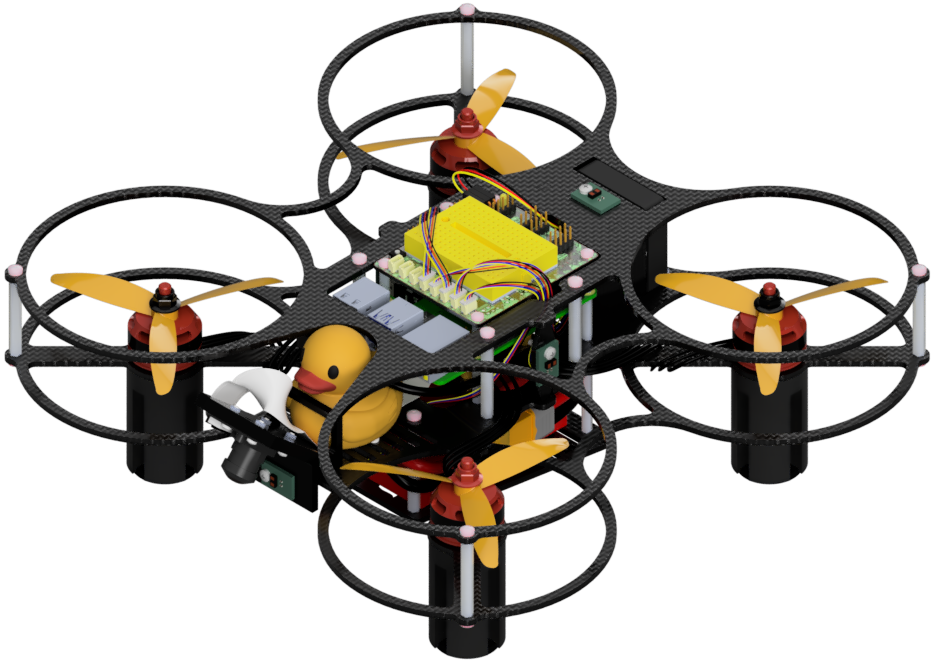Prerequisites
Contents
Prerequisites#
This section outlines the most important skills you will need for building your Duckiedrone.
Warning
Whether you are new to soldering or not, we recommend reading through this page to review the basic techniques used in the build.
Strip Wires#
Stripping involves removing a portion of insulation from a wire to expose its strands. This is done using a wire stripper. Once exposed, the wire can be tinned and soldered.
Tin#
Tinning is the process of applying solder to exposed wire or a metal pad. Using a soldering iron, heat the metal and melt the solder onto the surface. Tinning simplifies the soldering process by pre-coating the wire or pad.
Tinning a Wire#
Watch the following tutorial to learn how to tin and join two wires:
Note
Some parts may arrive pre-tinned by the manufacturer. You can identify pre-tinned wires by:
The “shininess” of the wire tip.
The inability to fray the wire strands at the tip.
However, pre-tinned tips are often ineffective. Cut off pre-tinned tips, then strip and tin the wire yourself.
Soldering#
Soldering involves joining two metal components by melting solder, which acts as a conductive bridge for electricity. Below are key safety and technique tips:
Danger
Use long-nose pliers or helping hands to hold wires and components, as they become hot quickly during soldering.
Avoid touching the soldering iron tip or other heated metal parts to prevent burns. If burned, rinse the area immediately with cold water.
Do not use the soldering iron on unintended surfaces; the heat can cause melting or damage.
Always use a soldering fan to avoid inhaling fumes.
Resources#
For a quick soldering overview, watch this YouTube tutorial.
For a more detailed introduction, review this article.
Troubleshooting#
Troubleshooting
SYMPTOM
I accidentally cut off too much wire while stripping.
RESOLUTION
Strip and tin one end of a new wire of the same color, then solder it to the original wire. Cover the solder joint with heat shrink tubing or electrical tape.
Troubleshooting
SYMPTOM
I cut off several strands of wire while stripping.
RESOLUTION
If only a few strands are missing, the wire is likely still usable. If many strands are gone, replace the wire.
Troubleshooting
SYMPTOM
I put too much solder on my wire while tinning.
RESOLUTION
Remove excess solder using a solder sucker or copper wick. Alternatively, use a soldering iron to pick up excess solder and clean it off with soldering wool.
Troubleshooting
SYMPTOM
My wire picks up random particles while tinning.
RESOLUTION
Clean the soldering iron tip with soldering wool frequently during use to prevent contamination.
Troubleshooting
SYMPTOM
The alligator clips of my helping hands are loose.
RESOLUTION
Remove the loose clip, pinch the end tighter with pliers, and reattach.
Troubleshooting
SYMPTOM
I burned some insulator onto my wire while tinning.
RESOLUTION
Small amounts of insulator burn are fine. For significant damage, carefully cut off the burned section or replace the wire.
Troubleshooting
SYMPTOM
I cannot tell if my wire is properly tinned.
RESOLUTION
Cut off the tip of the wire and inspect the core. If the solder has not penetrated the core or the strands can still spread, the wire is not properly tinned.
Troubleshooting
SYMPTOM
My solder keeps forming into a sphere instead of sticking to the wire.
RESOLUTION
This issue occurs when the solder is not fully melting due to:
A worn-out soldering iron tip.
Expired solder.
A malfunctioning soldering iron station.
Using non-rosin core solder. Apply soldering flux to the wire or try a different solder type.
